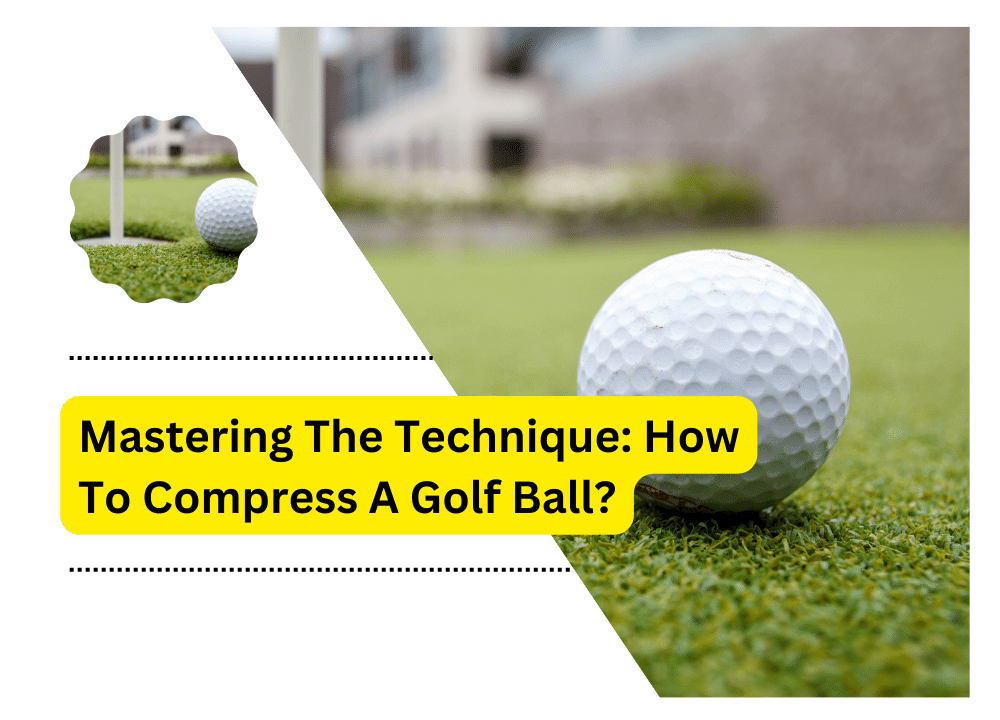
Golf is a unique sport requiring skill, precision, and the proper technique to succeed. Compressing the golf ball correctly is essential for maximizing the distance and accuracy of each shot. You can improve your game dramatically by knowing How to Compress a Golf Ball with every swing. This article will help you understand how to compress a golf ball effectively and improve your golf game.
The Science Behind Golf Ball Compression
Golf ball compression refers to the force required to compress the golf ball when struck with a driver or iron. The higher the compression, the more challenging and solid the golf ball’s core will become, resulting in greater distance when hit correctly. Golfers must learn to apply enough force while maintaining proper form and technique to achieve optimum compression.
Factors That Influence Compression
Swing Speed
The speed of your swing is one of the most essential factors in determining how much compression you can achieve. The faster your swing, the more force and power you can put into compressing the golf ball on contact. A slow or weak swing will result in less compression, leading to shorter distances and a lack of accuracy. It is important to practice different speeds and practice with golf balls of varying compression ratings to determine which rate is best for your game.
Clubhead Size
The size of the clubhead also affects how much compression a golf ball can take. A more giant head provides more weight and momentum, resulting in greater force on contact with the ball. Conversely, smaller heads provide less energy and can lead to less compression. Choosing the correct size clubhead for your swing speed and game is essential to achieve optimal results.
Types of Compression
There are two main types of golf ball compression: soft and hard.
- Soft compression golf balls offer more distance but need more accuracy due to their softer cores, which absorb some energy generated upon impact.
- Hard compression golf balls provide greater accuracy but less distance due to their more rigid, firmer cores that translate more energy to the ball on contact.
- Soft-compression golf balls are better suited for players with slower swing speeds, while hard-compression golf balls are best for those with faster swing speeds.
Golf Ball Construction
Golf ball construction is also essential to consider when choosing the right golf ball for your game. Different covers and cores are used to achieve extra compression, spin, and distance levels. Urethane and surly covers provide a softer feel on contact with the clubface, while balata covers provide more spin but less distance.
Weather Conditions
Weather conditions can also affect the amount of compression a golf ball will experience. Cold temperatures can cause golf balls to become more challenging, resulting in less compression on impact. Likewise, hot and humid conditions can cause the core of a golf ball to soften, leading to more compression but less distance.
Techniques for Compressing the Golf Ball Effectively
Now that you know the science behind golf ball compression, let’s look at some techniques for compressing the golf ball correctly.
Start with a Proper Setup
Having a proper setup is essential for achieving optimum compression on your shots. Begin by ensuring your grip and stance are correct, then focus on the clubhead. Achieving the right angle of attack is essential for compressing the golf ball correctly. Make sure your clubhead is entering the ball on a slightly upward trajectory and that you are making contact with the center of the golf ball.
Swing Through
Once you have achieved a proper setup, it’s time to swing through. The key is to swing as fast and powerfully as possible while maintaining control. Ensure your follow-through is long and powerful, as this will ensure the ball compresses correctly.
Stay Loose
It’s important to stay loose and relaxed throughout the entire swing. Tensing up on impact can cause you to lose power and control, resulting in less compression on the ball.
Practice Makes Perfect
The key to mastering golf ball compression is practice. Experiment with different swing speeds, clubhead sizes, and weather conditions until you find what works best for your game. With time and method, you can compress the golf ball more effectively and improve your overall golf game.
FAQs
What does compressing a golf ball mean?
How do you compress a ball with irons?
How many times can you hit a golf ball before it loses compression?
Conclusion
How to Compress a Golf Ball correctly is essential for achieving maximum distance and accuracy with each shot. By understanding the science behind golf ball compression and using techniques such as proper setup, swinging through, and staying loose, you can begin to master this technique and improve your game dramatically. With time and practice, you can compress the golf ball and improve your golf game effectively.
